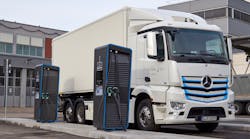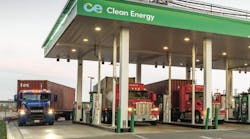Over the past several years, we have seen a shift to more regional haul operations as fleets were responding to drivers’ requests to get home more often — in many cases on a nightly basis. This allowed drivers to participate in more family events, see their friends and rest and recharge in their own beds. Check out a story from the road video from Run on Less Regional here.
Speaking of recharging, regional haul operations are a strong use case for electric vehicles. While the driver is home each night plugging into his or her normal life, the truck can be in the yard getting recharged for the next day’s run.
This got me thinking. Regional haul comes in a variety of shapes and sizes. In the work we are doing following up on our Run on Less Regional fuel efficiency road show, we identified several different types of regional haul:
The shorter routes with longer dwell times are good candidates for electric trucks. Do any of these sound like the way you operate? If so, have you considered the possibility of going electric? From what we have seen it would only take some minor changes to your day-to-day operations to accommodate this shift.
Many of you already have electric power coming to your yards for various demands. You should first consult with your local utility company to make sure you have enough power, as well as to discuss managed charging so you can avoid demand charges, which can dramatically increase the cost of charging.
You also might want to invest in charging software that allows multiple chargers on-site to be able to communicate with one another to optimize sequencing, load management, and variable time-of-day electricity rates and other factors that ensure your fleet is charging smartly.
Despite the curveball the industry — and the world at large — got thrown because of COVID-19, trucking will return to normal levels. While we may not go back to the depth of the driver shortage we had pre-COVID-19, fleets that want to keep their good drivers are going to continue to have to find ways to respond to their desire to be home on a regular basis. And the opportunities to move freight in a much more sustainable, even zero emissions manner continue.
So, with electric trucks, both the driver and the truck can do their work during the day, return home and recharge for another tomorrow.



